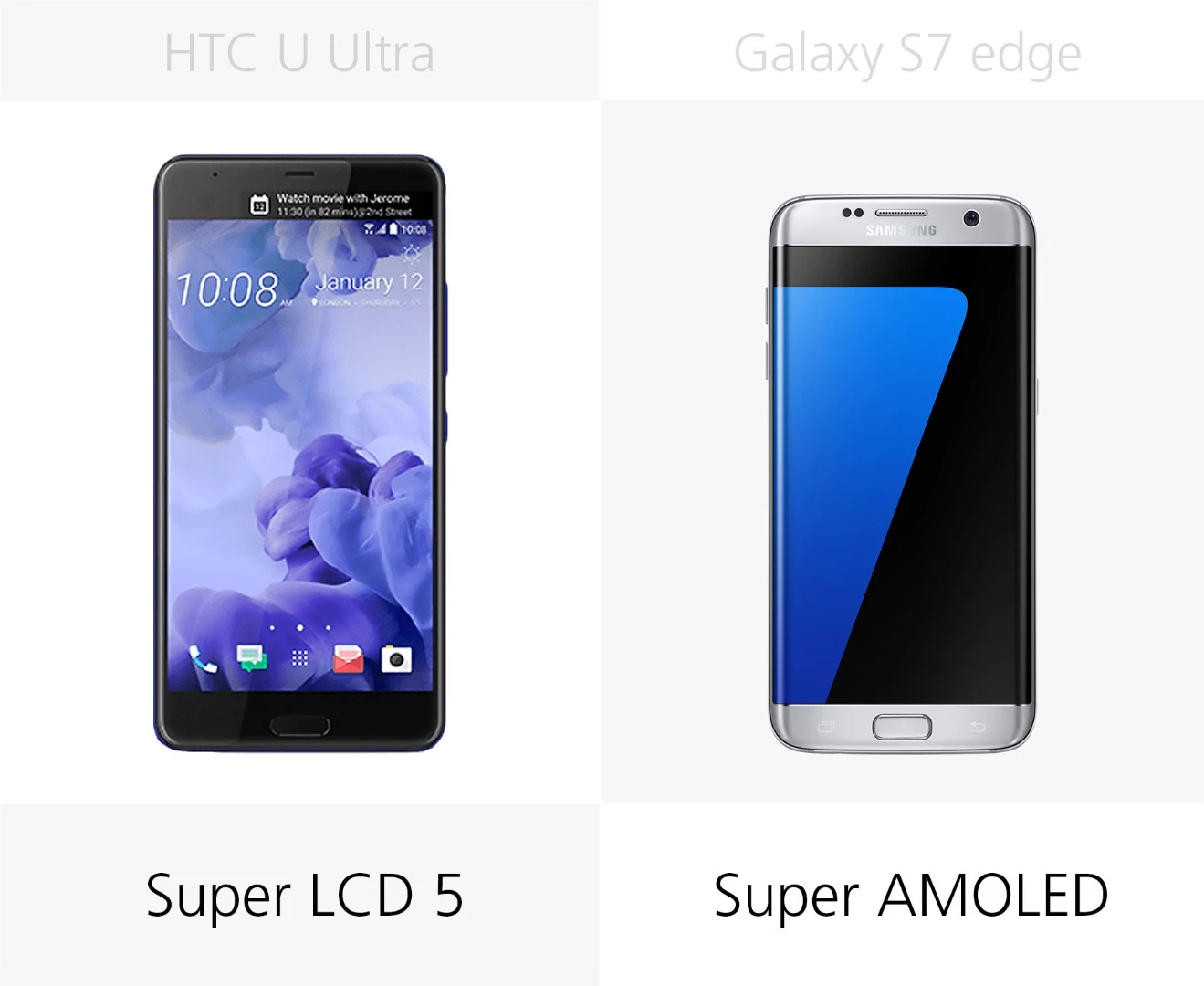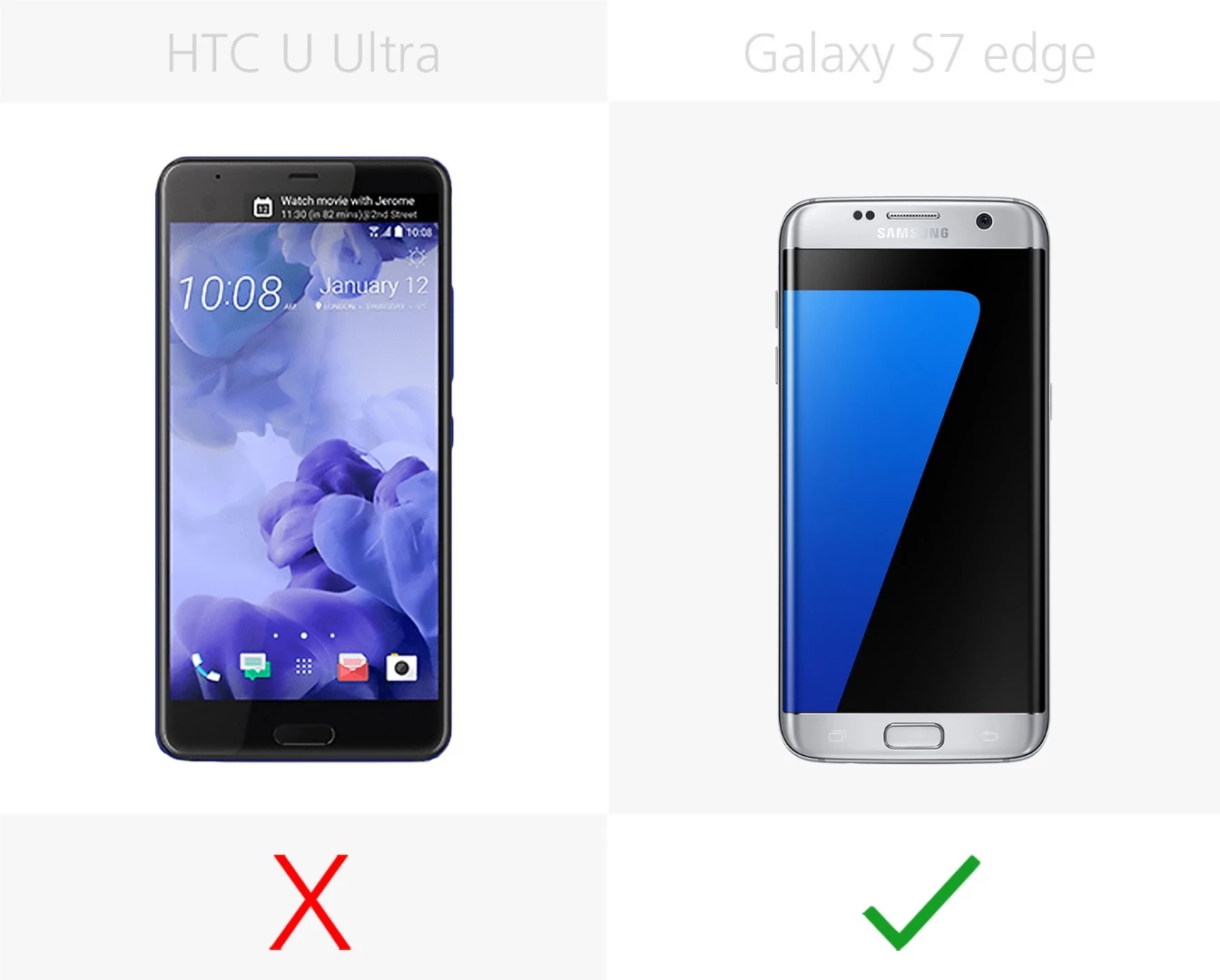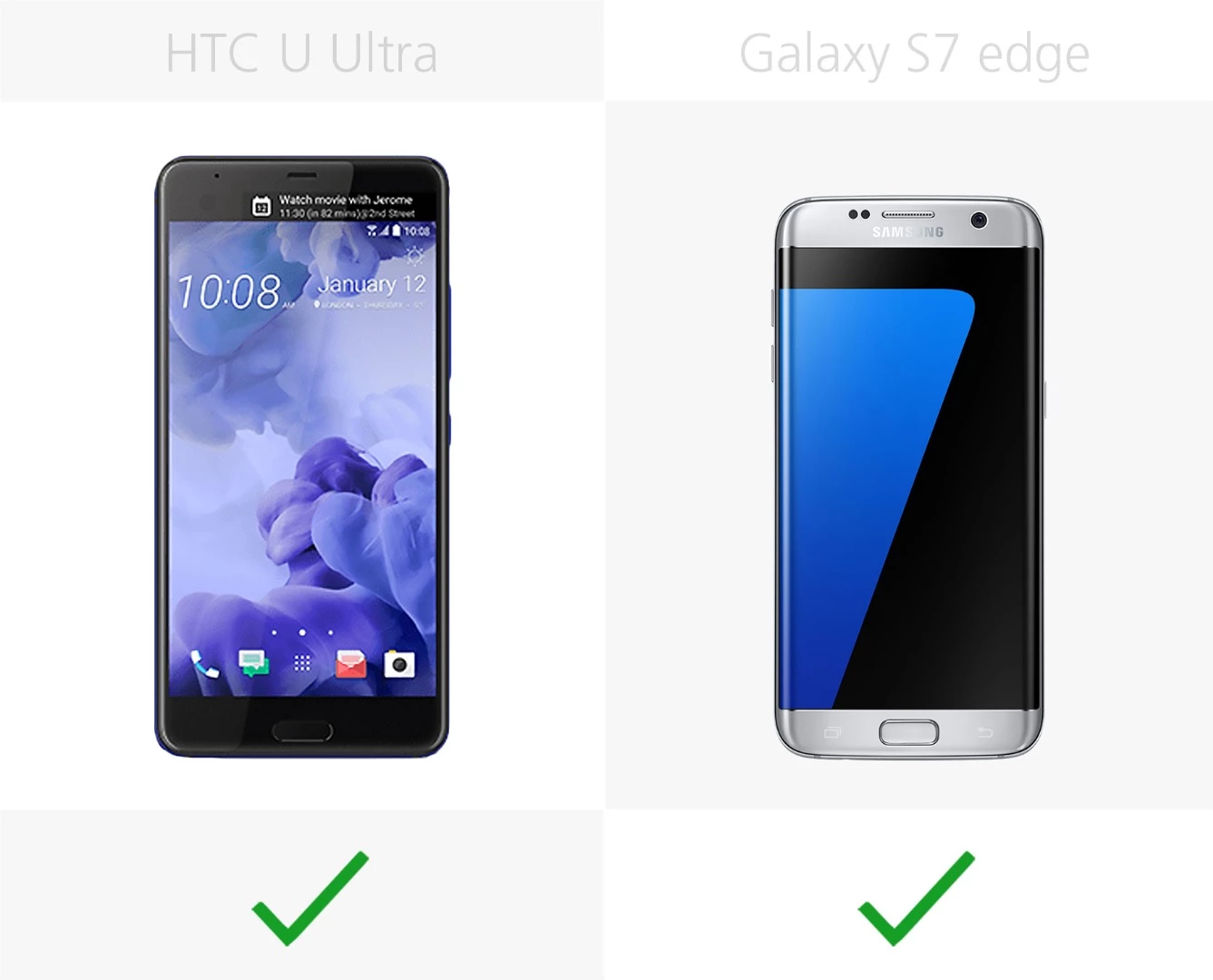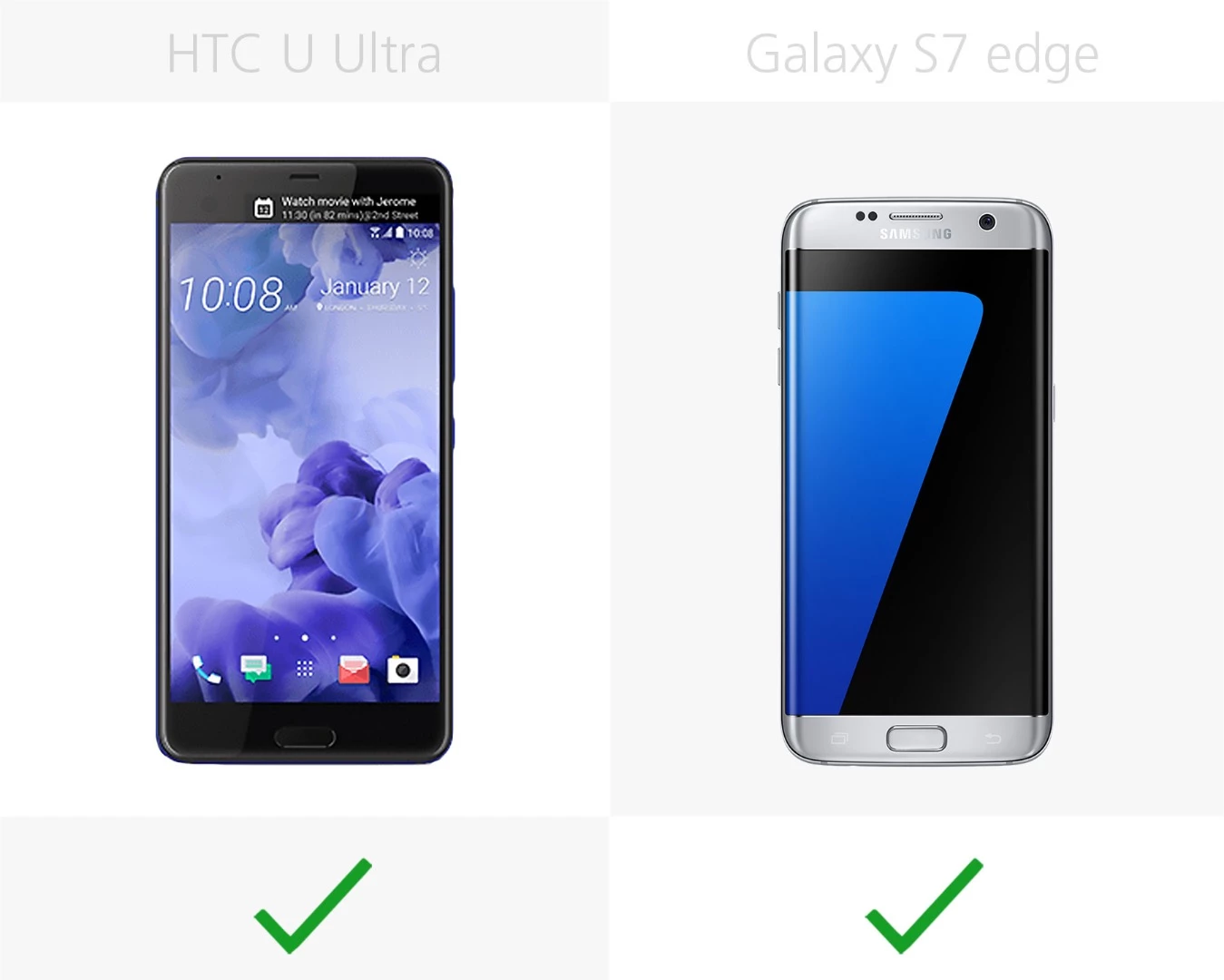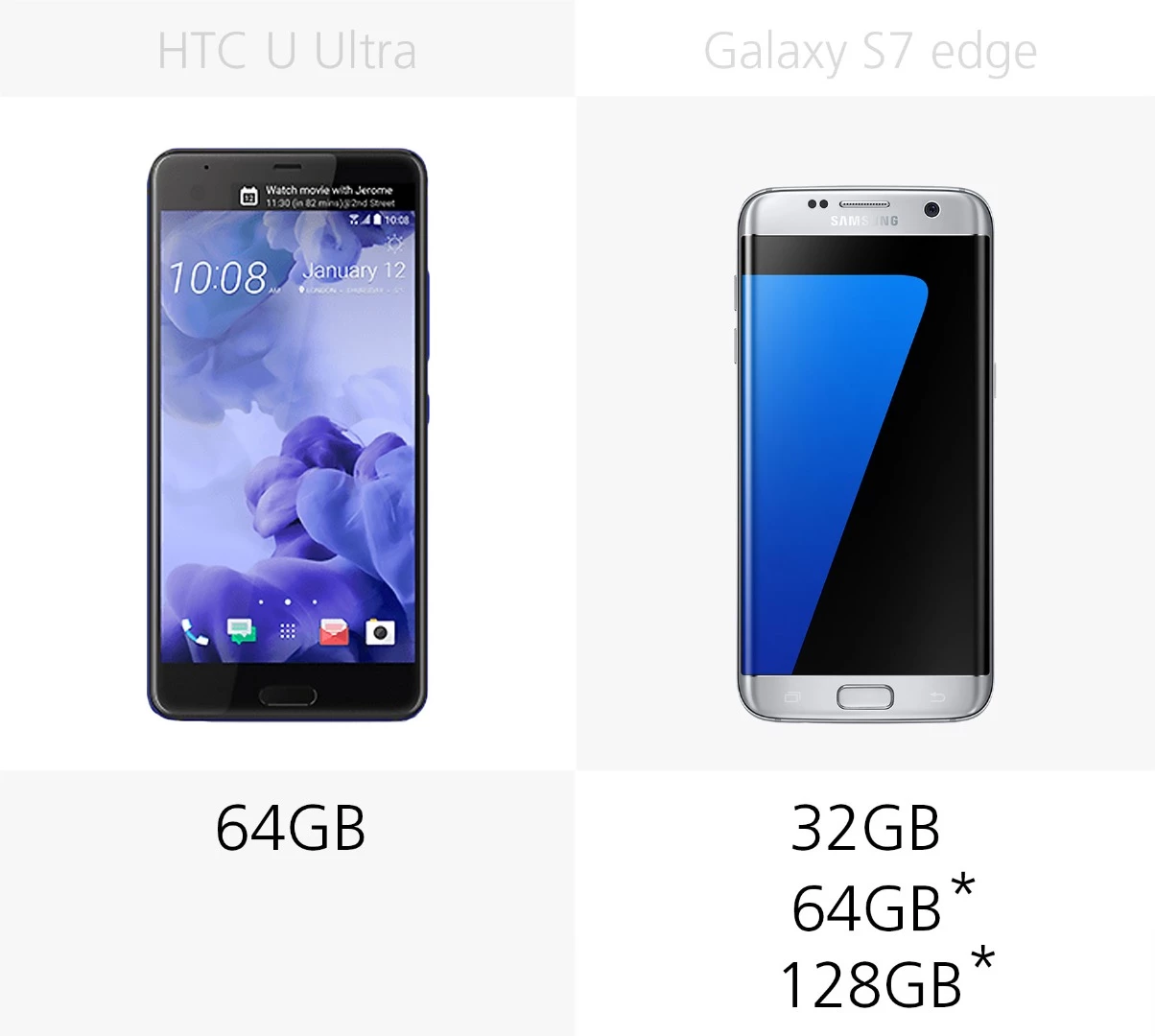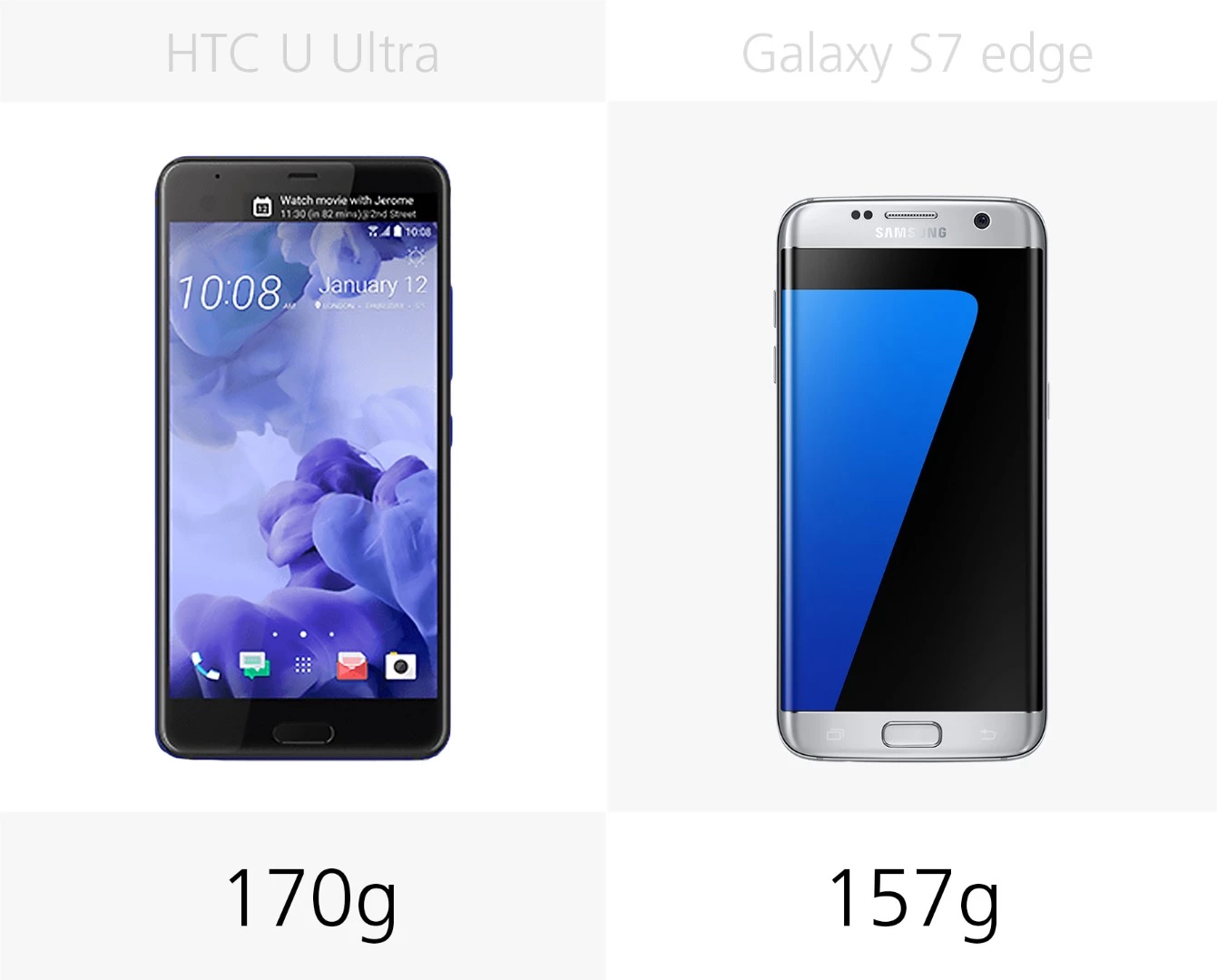Through the last few years, HTC has gradually faded from the mainstream smartphone spotlight: to the point where its 2017 flagship was introduced via remote live stream and will be sold online-only (quite a departure from the lavish launch events and wireless-carrier partnerships we typically see in the world of mobile). Let's see how that phone, the HTC U Ultra, sizes up next to the nearly-year-old Samsung Galaxy S7 edge.
Size

The HTC U Ultra is a large phone, measuring 7-percent taller, 10-percent wider and a smidge thicker than the Galaxy S7 edge.
Weight

HTC's 2017 flagship is also 8-percent heavier.
Build

A year or so ago, many accused HTC of pinching the iPhone's design. The U Ultra, though, looks more like a Samsung copycat, with its glass back and aluminum frame, along with the shape and location of the camera and flash.
Colors

You have several color options for each handset.
Display size

The U Ultra's screen is 7-percent bigger than the S7 edge's.
Display resolution

Both handsets have sharp QHD (1440p) displays, though the smaller screen gives the Galaxy the pixel-density advantage.
Display type

HTC is using a Super-LCD 5 for its screen, which eliminates the air gap between glass and display. Samsung sticks with its usual AMOLED.
Second display
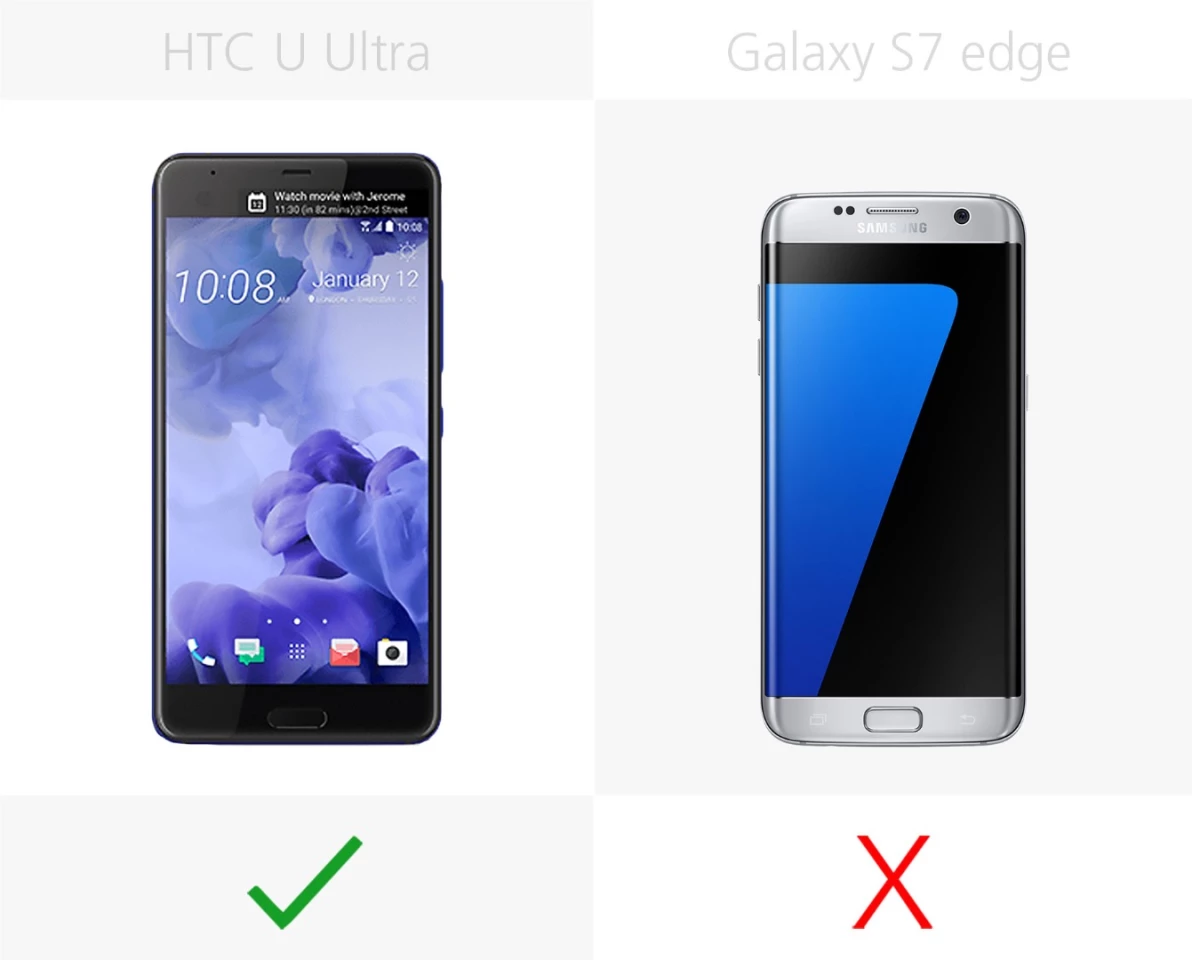
A near-perfect copy of a feature in the LG V series, HTC included a strip of second screen above the primary display. Like LG's approach, it shows shortcuts and notifications without intruding on the main screen.
Curved display

While HTC is marketing curved glass on the U Ultra, the screen itself is flat. The S7 edge lives up to its name with a display that slopes off on either side.
Processor

This is perhaps the biggest reason to balk at the HTC U Ultra. Despite launching several months from now, it's foregoing Qualcomm's early-2017 Snapdragon 835 in favor of the late-2016 Snapdragon 821.
While Samsung and LG have yet to announce their early-2017 flagships (likely called the Galaxy S8 and LG G6), we'd be shocked if they had anything other than the Snapdragon 835 under their hoods. And if annual launch cycles are any indication (they usually are), they'll be launching in the same general timeframe as the HTC U Ultra.
The asterisk next to the S7 edge's chip denotes that the international version uses an octa-core Samsung Exynos processor in place of Qualcomm's.
RAM

RAM is also even, at 4 GB each.
Storage

While Samsung offers several storage tiers, HTC sticks with one generous 64 GB model.
On U.S. wireless carriers, though, you'll only see a 32 GB option for the Galaxy S7 edge.
MicroSD

Both phones, however, have expandable storage.
Camera megapixels

We haven't yet tested HTC's camera, so stay tuned for our review.
Camera aperture (rear)

The year-old S7 edge has slightly-wider aperture than HTC's 2017 phablet.
OIS

Both have Optical Image Stabilization.
Water resistance
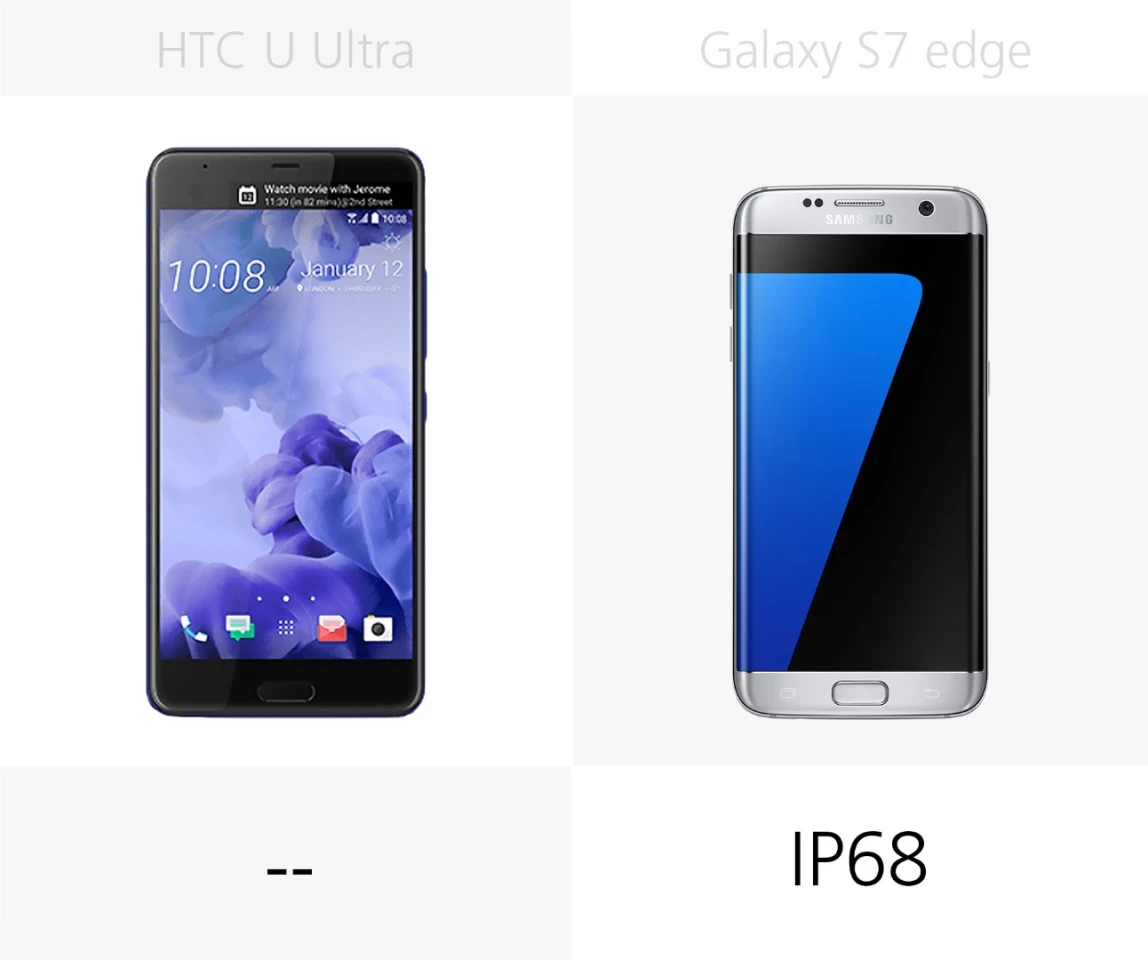
HTC didn't add any meaningful water resistance to its 2017 flagship. Samsung's early-2016 phone still has some of the best water resistance you'll find in a phone (submersion in 1.5 m of water for up to 30 minutes).
Battery

For such a big phone (with power-sucking QHD display), the HTC U Ultra has a relatively small battery. This could be a red flag for HTC's phone: Keep an eye out for our battery benchmarks after it launches.
Headphone jack

HTC followed the trend of eliminating the headphone jack from its latest flagship. As an olive branch, it's bundling a pair of USB-C earbuds that uses a sonic pulse to analyze your ears and shape audio accordingly (many headphones, including the excellent Sony MDR-1000X, have a similar feature).
Considering one of the HTC 10's killer features was its 24-bit DAC (digital-analog converter) for Hi-Fi audio, the U Ultra has a tough act to follow in the audio department. Based on its lack of DAC or 3.5-mm headphone port, it's highly unlikely to continue the company's audiophile-approved legacy.
Fingerprint sensor

Both have home-button-placed fingerprint sensors.
Software
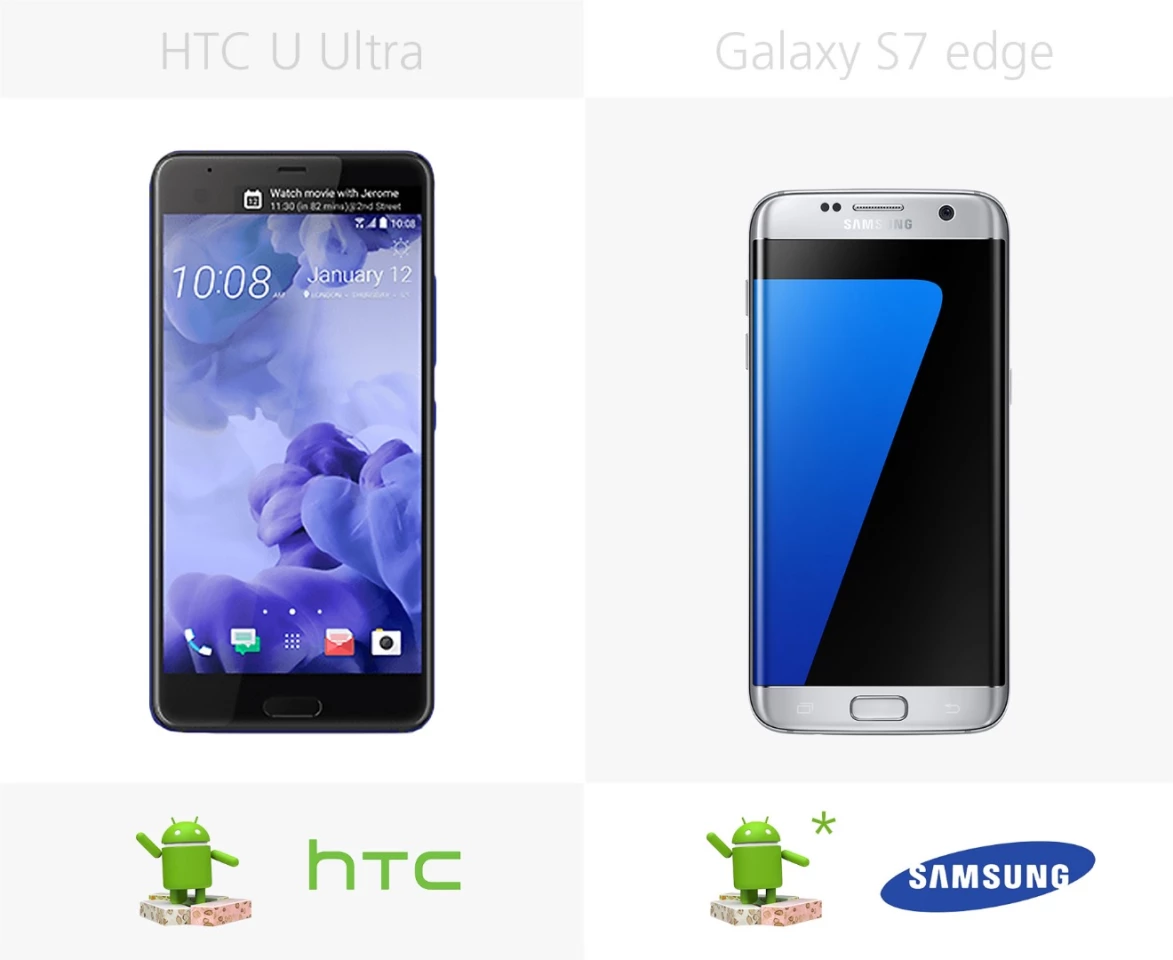
The U Ultra will launch with Android Nougat. At the time of publication, the Nougat update has started rolling out for the S7 edge but hasn't reached all wireless carriers.
Keep in mind, though, that we're still a couple months away from the Ultra's launch: By that point, the Galaxy S7 will likely be updated across the board.
Both phones have respective manufacturer custom UIs layered on top of Google's core software.
Release
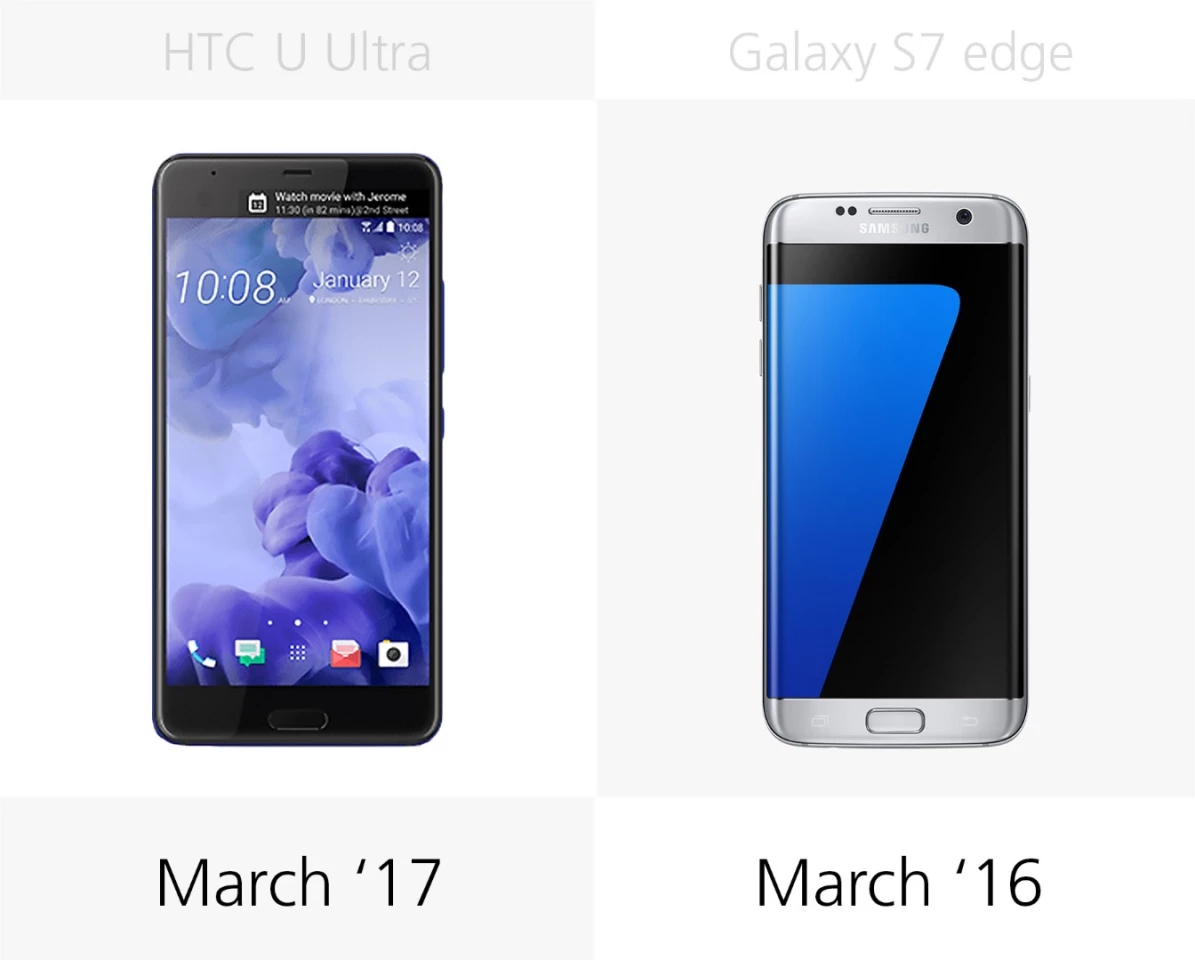
The HTC U Ultra starts shipping in mid-March. By then, if we haven't already heard about the Galaxy S8, we likely will soon after.
Starting price (full retail)

Starting prices are similar, as Samsung flagships don't often see steep discounts until their successors arrive. Considering the phones are a generation apart, though, the U Ultra doesn't exactly stand out as the clearly superior phone – at least on the spec sheet.
The HTC 10 was among our favorite phones of 2016, but the U Ultra looks like a sketchier proposition. Dropping the audiophile focus, skipping water resistance, using a processor that will be outdated at launch and with no other killer features to make up for it, we'd recommend waiting for our full review before thinking about pulling the trigger on it. At the very least, wait and see what the Galaxy S8 and LG G6 look like.
For more, you can read our initial coverage of the HTC U Ultra and our review of the S7 edge.











